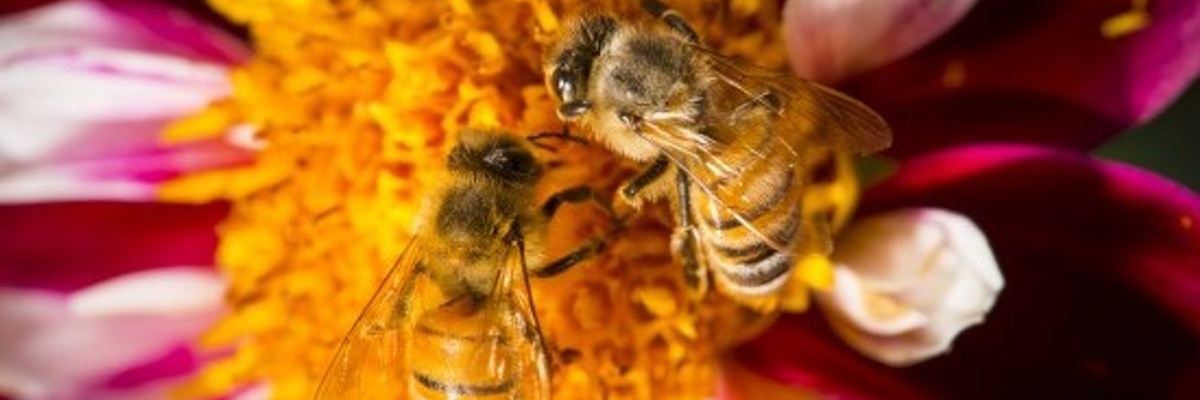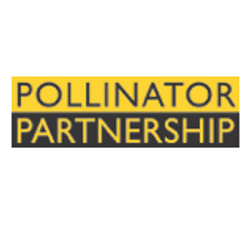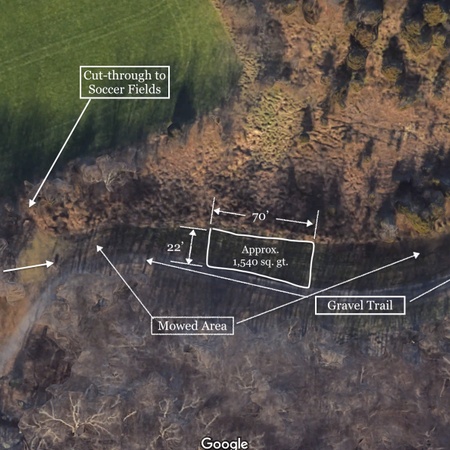Action plan:
Overall goal: We will prepare two adjacent native wildflower plots over the course of six months, a small one (~150 sq ft) with plugs of perennials for rapid impact, and a larger one (~1500 sq ft) with seeds for a longer-term investment in the conservation area’s biodiversity.
Timeline: When will you be able to start your project? How often will your team meet? Are there any key dates to share for the project?
We will meet monthly beginning in February 2023 to plan the installation of our habitat and coordinate its care and maintenance while it matures. This should allow us to prepare thoroughly for May installation of mature plants and summer site prep for fall seeding of an adjacent plot. Fall seeding should be complete on or around September 1st to allow six weeks for our winter cover crop to establish prior to the year’s first frost.
Budget: You don't need to share exact prices, but please share how you're planning to spend the seed funding & what costs you're anticipating to get your project up and running:
Most of the money will go toward the smaller plot, which will require several hundred dollars worth of plants, mulch, soil conditioner, and equipment for remote watering. The larger area will need a large volume of clear plastic sheeting and large staples to smother the existing lawn, native wildflower seed mix, and sand to aid in seed scattering. Both plots require sign posts and metal outdoor signs to educate the community about the habitat and to protect the area from landscaper’s mowers.
Impact: How will your community benefit from this project? Do you have any measurable goals for your project, such as the number of people that will participate? Are you hoping to spread knowledge or increase interest in a specific subject?
We hope to instill in the residents of the Countryside an appreciation for the many wonderful creatures who also call our neighborhood home. The community contains over 2000 residences and the gravel path that runs alongside the project is popular for running, walking, and biking. A great many people will see the habitat’s beauty and our educational signage and perhaps be inspired to make their own landscapes more pollinator-friendly. Additionally, over 40 of our neighbors have pledged to volunteer in our planting efforts. Many of these neighbors have indicated in a recent survey that they have little to no experience gardening with native plants, but have great enthusiasm for learning on the job. Volunteers have also expressed their intent to bring their families to our workday. The project is walking distance from the neighborhood’s k-12 schools. We hope students of all levels will be able to visit the area as part of school projects. Local student and scout groups have also expressed interest in volunteering with us. Neighbors of all ages and experience levels will gain first-hand knowledge of how to best support pollinators for a healthy ecosystem.
Location: If your project requires physical space, have you decided the location? Do you have all necessary permission and permits to carry out your project at the chosen location?
The project will be installed in a large mowed lawn along a gravel path in the Horsepen Run conservation area. This is a private area and is owned by the Countryside proprietary and managed by an HOA committee for the neighborhood’s recreational use. The HOA committee voted unanimously to approve this project and the ChangeX project is led by a representative from that committee. Team members are Countryside residents.
Covid-19 safety: Meetings will be held over zoom. Volunteer work will occur outdoors. These are low-risk approaches for viral spread.





